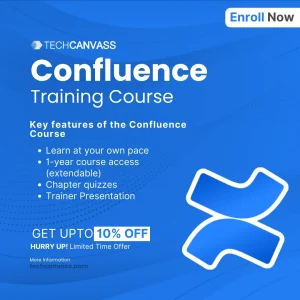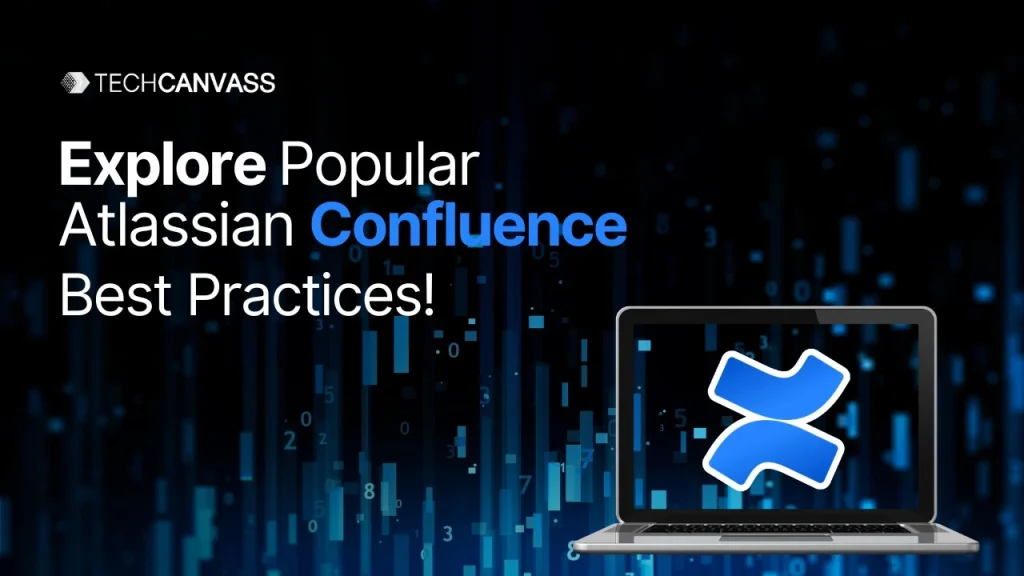Welcome to a comprehensive guide on confluence best practices, your roadmap to harnessing the full potential of this dynamic collaboration platform. Confluence is a portal for efficient content creation, organization, and engagement; it is more than just a tool.
This blog will examine the key techniques that will enable you and your team to efficiently develop, manage, and collaborate using Confluence.
Best practices for Confluence: Content creation, organization, and engagement
Effectively leveraging Confluence requires more than just basic know-how. To truly harness its potential, you need to embrace a set of best practices that pave the way for seamless content creation, organization, and engagement. Let’s explore these practices in depth to understand how you can elevate your Confluence experience:
1. Resources for elevating content creation
1.1. Crafting beautiful pages in Confluence: Transform your content creation game by mastering the art of building pages that captivate. A video tutorial, spanning under four minutes, walks you through the process of creating pages from scratch or employing best practice templates. These techniques empower you to craft visually striking Confluence pages that stand out from the crowd.
1.2. Formatting your page: Delve into the Confluence Cloud editor to grasp the array of formatting options at your disposal. Learn how to apply formatting to text, modify page layouts, and seamlessly incorporate tables, media, and links into your content.
1.3. Starting with templates: Unleash the power of page templates to kickstart your projects with precision. These templates, designed for various purposes like meeting notes, project plans, and onboarding guides, infuse your work with industry expertise, setting you on a path to success.
1.4. Building custom templates: Tailoring content consistency across teams or organizations becomes effortless with Confluence’s custom templates. A comprehensive blog post guides you through leveraging Confluence’s features to design templates that perfectly suit your needs.
2. Resources for organizing team content
2.1. Establishing an information architecture: As your team’s content repository grows, having an adaptable information architecture becomes indispensable. Learn how to categorize your content to align with your current and future organizational needs.
2.2. Marie Kondo’s approach: Following the philosophy of decluttering and organization, adopt Marie Kondo’s principles to keep your Confluence instance clutter-free. From organization to discarding content that no longer holds value, this approach ensures a streamlined experience.
2.3. Archiving old pages: Discover the importance of archiving outdated pages. By doing so, you declutter your page tree, enhance searchability, and reassure users that the information they find is both accurate and up-to-date.
2.4. Excel in content management: Empower your team with the skills to build user-friendly, well-formatted content. With comprehensive training, you can learn essential topics, including templates, page and space structure, and content management best practices.
3. Resources for boosting team engagement and enhancing collaboration
3.1. Creating transparency: Understanding the impact of transparency on organizational effectiveness and employee satisfaction is key. Use those strategies that foster an open, transparent, and collaborative workplace culture.
3.2. Boosting employee engagement: You should delve into the world of employee engagement, uncovering its significance and learning strategies to maintain a motivated and productive workforce.
3.3. Utilizing internal blogging: You have to learn how internal blogging enhances knowledge sharing, increases productivity, builds employee bonds, and enriches your workplace culture.
Confluence best practices for documentation
Let’s delve into the six key steps that constitute Confluence best practices for documentation:
Step 1: Create the framework
Begin your documentation journey by establishing a solid framework. This includes defining clear categories, structures, and hierarchies for your content. Determine how your information will be organized and presented to ensure consistency and easy navigation for your team. This framework serves as the backbone of your documentation strategy, facilitating content creation and maintenance.
Step 2: Implement Confluence permissions
Fine-tuning content accessibility is paramount to ensure the right individuals have the appropriate level of access. Leverage Confluence’s permission settings to control who can view, edit, and contribute to your documentation. Assign permissions based on roles and responsibilities, safeguarding sensitive information while fostering collaboration among authorized team members.
Step 3: Enhance visual appeal
Aesthetics matter when it comes to documentation. Incorporating relevant images, diagrams, charts, and formatting enhances the visual appeal of your content, making it more engaging and comprehensible. Consistent formatting ensures uniformity throughout your documentation, fostering a sense of professionalism and aiding in information absorption.
Step 4: Focus on clarity and navigation
Prioritize clarity in your documentation. Craft content that is concise, well-structured, and easily digestible. Use headings, subheadings, bullet points, and numbered lists to organize information logically. Create a logical flow that guides readers seamlessly through your content, eliminating confusion and enhancing the overall user experience.
Step 5: Make your content interactive
Static documentation can often be monotonous. Infuse interactivity into your content to captivate your audience. Utilize Confluence’s macros, buttons, and interactive elements to enhance user engagement. By incorporating elements like collapsible sections, tabs, and navigation panels, you empower users to explore and engage with your content actively.
Step 6: Get your Confluence documentation online
Making your Confluence documentation accessible online is a crucial step. By hosting your documentation on a web-based platform, you enable easy access for all team members regardless of their physical location. Online availability fosters collaboration, simplifies information sharing, and ensures that your documentation remains up-to-date and easily accessible whenever needed.
Confluence best practices for meetings
- Keeping participant list concise: Maintain efficiency by keeping core participants limited, while using “@” mentions to include spectators who can contribute.
- Crafting an open agenda: Foster collaboration by creating an agenda that welcomes contributions from all participants, ensuring everyone’s voice is heard.
- Linking agendas in calendar invites: Increase visibility by including meeting agendas in calendar invites, providing attendees with valuable context.
- Leveraging expertise across teams: Infuse discussions with diverse insights by involving experts from different teams, enriching your meeting’s outcomes.
- Phrasing agenda items as questions: Encourage active participation by framing agenda items as questions, prompting thoughtful discussions and engaging interactions.
Conclusion
Confluence, with its versatile features and robust capabilities, offers a remarkable platform to craft, manage, and share documentation that propels your team’s success. By putting the mentioned best practices into practice, you not only speed up content development but also improve accessibility, engagement, and the user experience as a whole. Confluence, keep in mind, is more than just a tool; it’s a canvas to create a web of shared information, innovation, and expansion within your company.
Elevate your Confluence proficiency to new heights with our Confluence training course. Whether you’re a seasoned user or just getting started, this course is meticulously designed to help you harness the full power of Confluence. From creating visually stunning pages to organizing content with precision, we cover it all. Dive deep into advanced techniques and master the art of seamless collaboration.
Our course goes beyond the basics, providing insider insights and expert tips that are indispensable in a professional setting. Propel your career forward by enrolling now and becoming a Confluence expert with TechCanvass.



